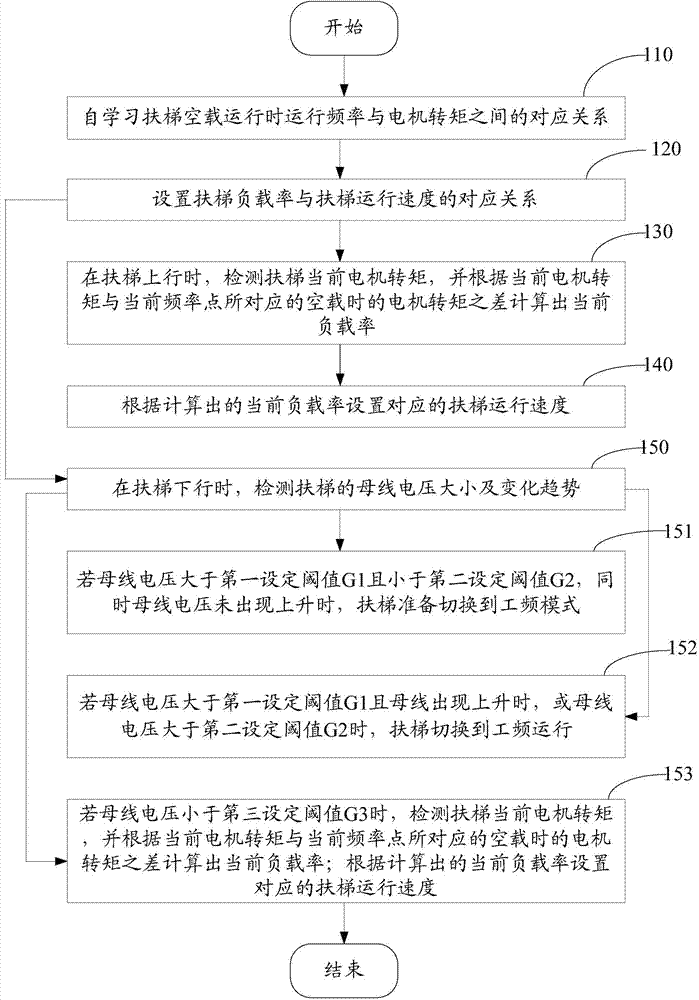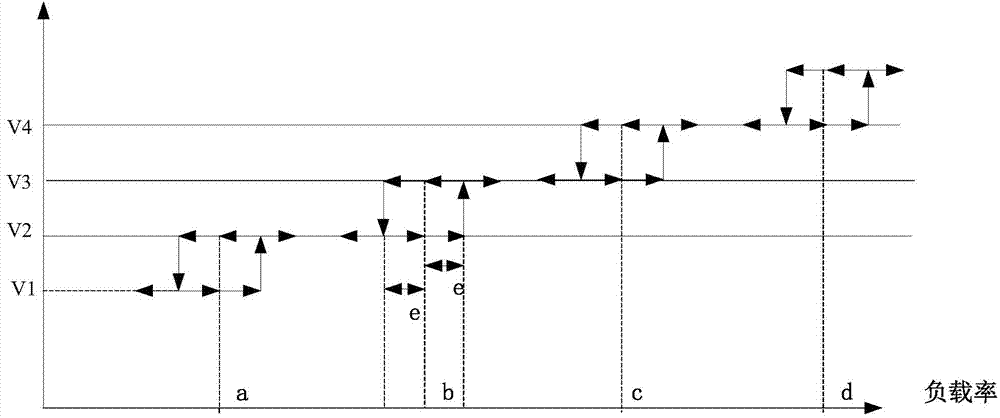Automatic escalator speed regulating method
An automatic speed regulation and escalator technology, which is applied in the energy-saving escalator automatic speed regulation and low-cost fields, can solve the problems of being unable to sense, always not moving, always moving (that is, always sensing the situation of passengers, etc.), to reduce components damage, cost-saving effect
- Summary
- Abstract
- Description
- Claims
- Application Information
AI Technical Summary
Problems solved by technology
Method used
Image
Examples
Embodiment Construction
[0038] Such as figure 1 Shown is the flowchart of the automatic speed regulation method of the escalator.
[0039] A method for automatic speed regulation of an escalator, comprising the following steps:
[0040] Step S110, self-learning the corresponding relationship between the running frequency and the motor torque when the escalator is running without load.
[0041] The steps of step S110 self-learning the corresponding relationship between the running frequency and the motor torque when the escalator is running at no-load include:
[0042] ① After the escalator is powered on for the first time and runs stably at the low-speed energy-saving operating frequency f1 for the rated time, the B motor torque data of the escalator is sampled, and the B motor torque data are averaged and stored.
[0043] ② Increase the operating frequency by 0.5 Hz sequentially on the basis of the low-speed energy-saving operating frequency f1 until the escalator reaches the full-speed operating ...
PUM
 Login to View More
Login to View More Abstract
Description
Claims
Application Information
 Login to View More
Login to View More - R&D
- Intellectual Property
- Life Sciences
- Materials
- Tech Scout
- Unparalleled Data Quality
- Higher Quality Content
- 60% Fewer Hallucinations
Browse by: Latest US Patents, China's latest patents, Technical Efficacy Thesaurus, Application Domain, Technology Topic, Popular Technical Reports.
© 2025 PatSnap. All rights reserved.Legal|Privacy policy|Modern Slavery Act Transparency Statement|Sitemap|About US| Contact US: help@patsnap.com



